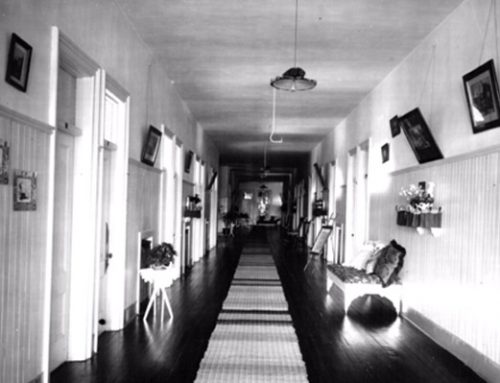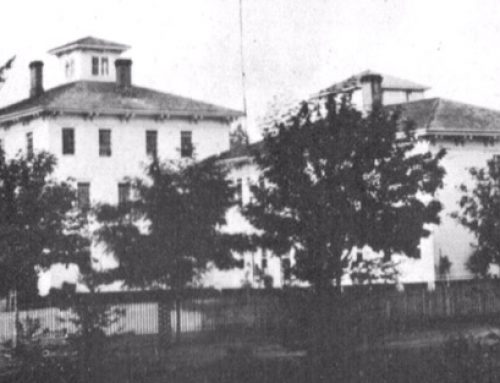The following article was found in a scrapbook in the Oregon State Hospital Museum Collections. From the text it appears that it was published in the Oregon Statesman Newspaper in 1965, although exact publication date is unknown.
Charles Robinson, whose service as a psychiatric aide and a supervisor of aides stretches to the days when the OSH was known as the state insane asylum,* will be honored by hospital employees Wednesday as he retires.
Robinson, who was 65 in January, has been a hospital employee since 1934, except for three years in the service in world War II. Since 1945 he has been supervisor of aides.
More Pleasant today.
Services as a mental hospital aide has never been easy, but it’s a more pleasant job now than it was before the advent of drugs, Robinson recalls.
Treatment in 1934 was custodial only for the vast majority of patients; about 2100 were crowded into the old Center building and the Dome building at OSH.
“I was scared to death for the first five or six weeks,” Robinson recalls. “In those days they just handed you the keys, sent you to a ward and you went to work.”
An aide has a little more orientation now before he starts to work , and there isn’t as much contrast between the hospital and ‘outside,’ notes Robinson.
Outstays Nearly All
A native of North Carolina, Robinson came to Oregon from Chicago, looking or a job during depression times. He took it with no idea of making OSH a permanent stay, but he has out-stayed all except one other hospital employee and a few older patients.
OSH had only one ‘open’ ward in 1934, a male ward; the first women’s ward to be opened came a few years later. Now nearly all the wards are open.
Robinson says the greatest change in 31 years has been the advent and effectivenss of tranquilizer drugs.
“everyone’s attitude changed,” he notes. Patients are easier for aides to handle and for doctors to treat.
MORE kindly disposed.
Aides are more kindly disposed, he observed, to a patient on whom they can turn their back without expecting a kick or a hit.
The new drugs have helped make the work of an aide more rewarding, Robinson feels, and aides are able to help more with the patients instead of being limited to physical care.
In 31 years, Robinson has seen the full circle of patient load at OSH. From 2100 in 1934 the population climbed to about 3600 in the high periods of the early 1950s. Today it is 1746.
Opening of Columbia Park and Dammasch state hospitals, plus shifting elderly patients to nursing homes brought much of the decrease, as did the cessation of admitting alcoholics.
Regular work shifts.
Work hours for aides have decreased form the 12-hour shifts, six days a week that were the rule in 1934 to the regular eight-hour, five day shift of today.
Despite the long hours of earlier days, Robinson only claimed tow day’s sick leave in 31 years, somewhat of a record in itself.
Although his retirement is official July 1, he will stay another six weeks to fill in on another job until a replacement is found. Then he plans some fishing and gardening. He lives in Salem with his wife.
Hospital employees will honor the longtime employee at a coffee Wednesday from 2 to 330 pm in the auditorium.
*This statement appears to be incorrect. The name of the hospital was changed to Oregon State Hospital in 1913 according official biennial reports made to the Oregon State Legislature. Robinson did not join the OSH staff until 1934, long after the name change.


